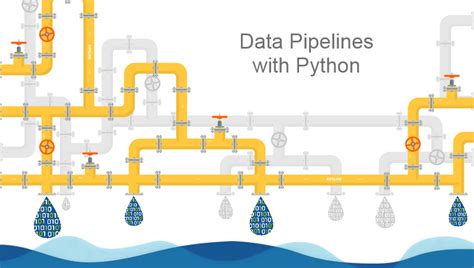In the ever-evolving landscape of data engineering, there’s a constant tug-of-war between code-centric solutions and graphical, low-code alternatives. While traditionalists often champion robust, code-heavy tools like Airflow, there’s an emerging interest in more accessible platforms that don’t compromise on functionality. Enter Amphi, a low-code ETL solution specifically designed for the Python ecosystem. The platform seems to address a myriad of challenges, from data preparation to AI pipeline generation, by offering a GUI that generates Python code. This promises the flexibility of traditional coding with the accessibility of a visual interface.
Amphi aims to stand out by leveraging JupyterLab, an environment familiar to most data engineers and scientists. The integration is seamless, requiring just a simple installation of a JupyterLab extension. This feature is particularly compelling for existing Jupyter users who would prefer not to juggle multiple tools. By embedding within JupyterLab, Amphi provides a visual platform to construct data pipelines while allowing users to dip into the Python code it generates whenever customization is necessary. This combination of graphical and code-based design makes it an appealing middle ground for teams of varying technical expertise.
One of the standout features of Amphi is its commitment to generating non-proprietary Python code. This is crucial because it ensures that users retain full ownership of their workflows, making it easier to deploy pipelines across different environments such as AWS Lambda, EC2 instances, on-premise servers, or Databricks. This sidesteps the vendor lock-in problem often encountered with other low-code tools. According to its developer, Amphi projects aim to mitigate common downsides of low-code solutions like scalability issues and inflexibility while embracing the contemporary standards of version control and modular design through JSON-based pipeline definitions.
However, the discussion around Amphi has not been without controversy. A significant point of debate is its claim to be open-source. Although the platform is available under the Elastic License v2 (ELv2) on GitHub, which makes it ‘source available’, it doesn’t conform to the strict definitions set by the Open Source Initiative (OSI). This distinction hasn’t sat well with some users who feel misled by the open-source labeling. It’s a cautionary tale about the importance of clear, transparent communication regarding software licenses, especially in a community that values openness and collaboration.
Despite the licensing concerns, the broader community reaction has been largely positive. Many users appreciate Amphi’s drag-and-drop interface and its potential uses in rapid prototyping and smaller-scale data tasks. The modularity of ETL as a configuration file (JSON) that can be versioned and easily modified is another plus. This brings us to an emerging sentiment: while the industry has shifted heavily towards code-based ETL setups to meet scalability and modularity demands, there’s still ample space for low-code solutions. These tools democratize access to ETL development, enabling smaller teams and less technically proficient users to build sophisticated data workflows. As machine learning and AI continue to infiltrate business processes, the emphasis on speed and ease-of-use will likely fuel further interest and development in low-code data engineering platforms like Amphi.
In conclusion, Amphi represents a significant step forward in making data engineering more accessible and versatile. Its integration with JupyterLab, commitment to generating deployable Python code, and user-friendly graphical interface make it a powerful tool for a diverse range of data tasks. While the debate over its open-source status highlights the need for transparency, the platform’s benefits in terms of productivity and flexibility are clear. Whether you’re a seasoned data engineer or a business analyst looking to streamline data preparation, Amphi’s blend of low-code convenience and Python’s versatility might just be the balanced solution you’ve been searching for.


Leave a Reply